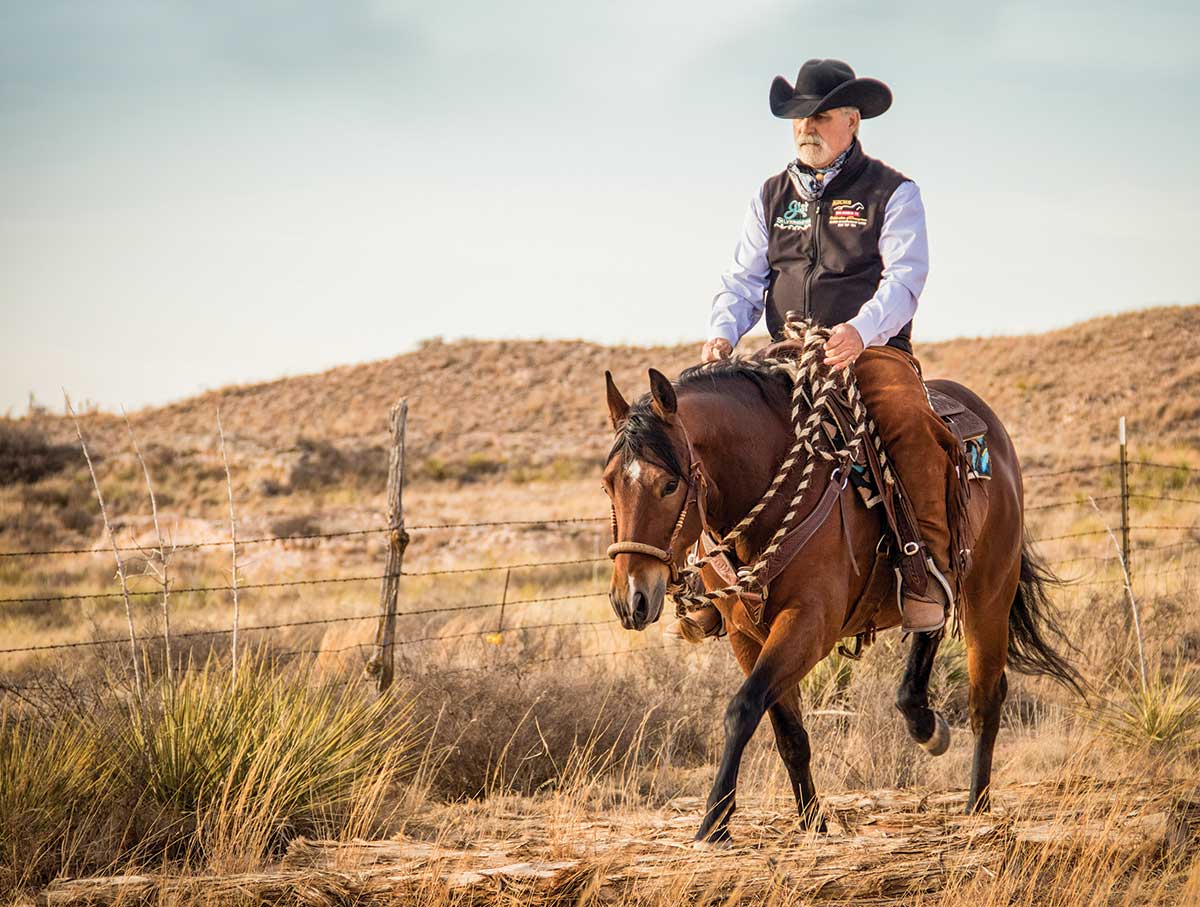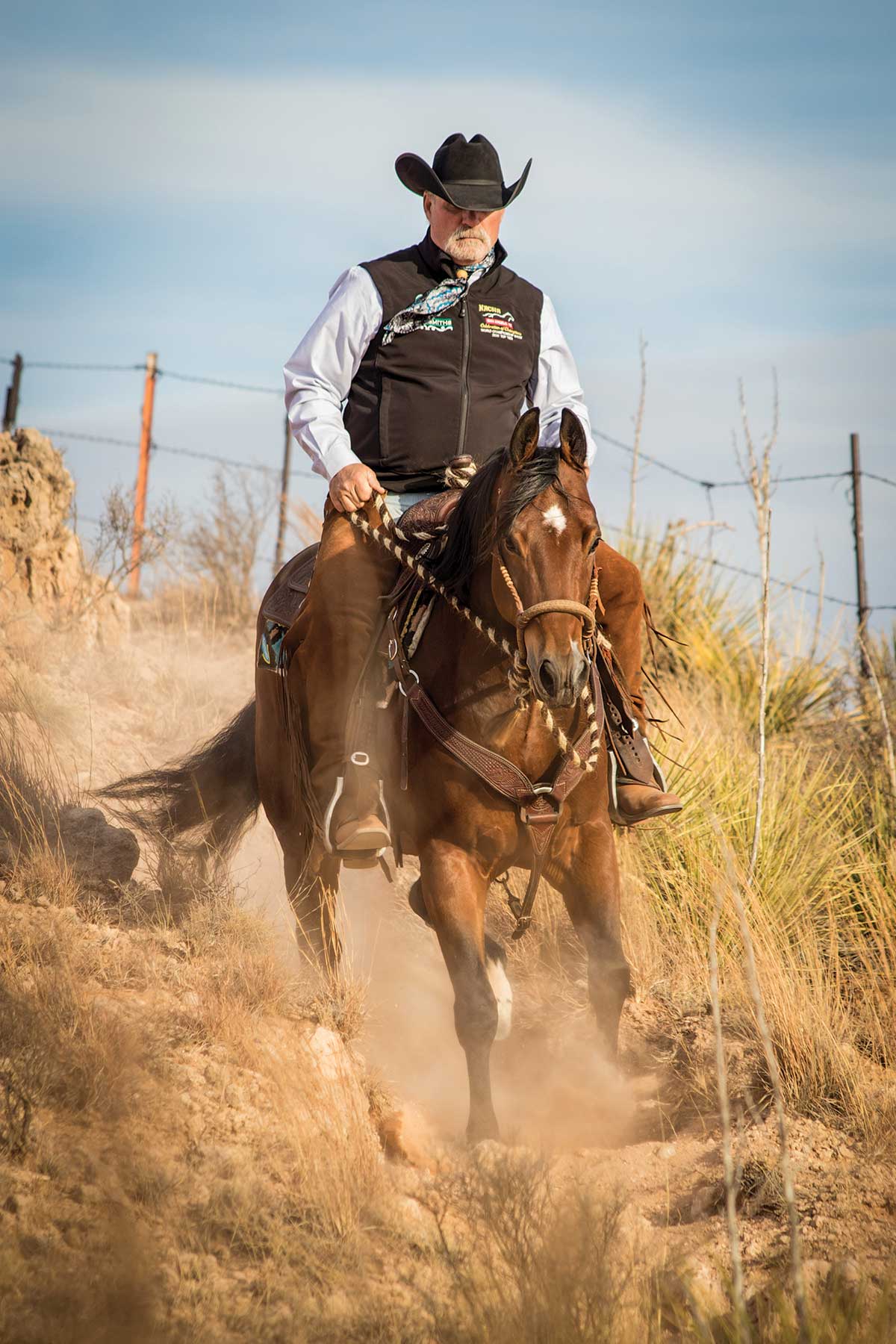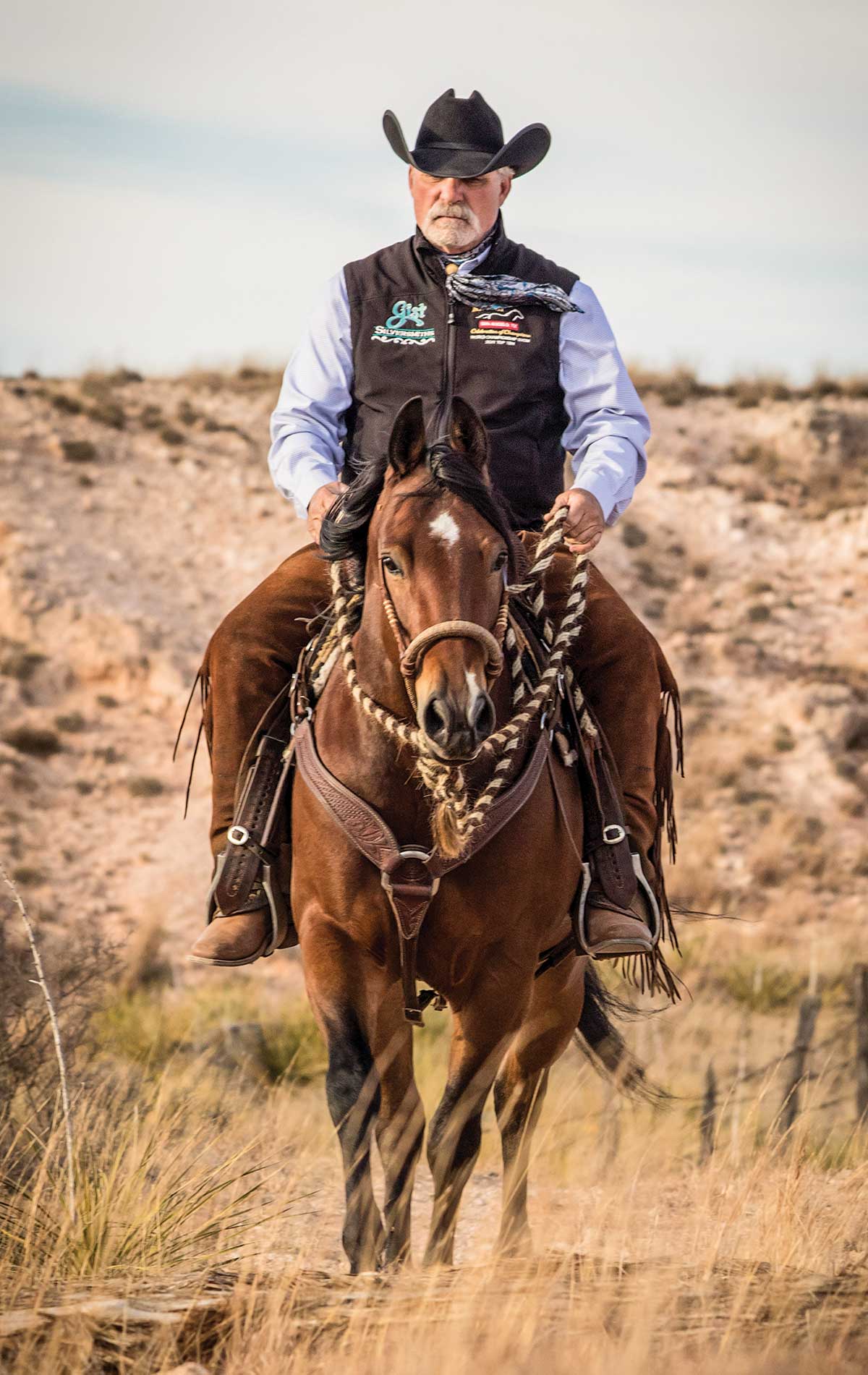
Transitions ultimately separate the best horses from the rest in the ranch riding class. Every exhibitor walks, trot, lopes, and extends their horses’ gaits. So, the judge must focus on how horses enter and exit each gait—transitions—to determine placings. It only makes sense that your focus should lie here, too.
I grew up working cattle, both in the feed yards and on the free range, so I’ve spent a lot of time in the saddle speeding up, slowing down, and extending my horse’s stride. Here, I’ll cover six concepts to keep in mind when perfecting transitions at home and when you’re showing to a judge.
Cultivate a Soft Horse
I ask all my students, “Which horse wins almost every class?” It’s usually the softest horse—the one with the least amount of resistance. And this includes during transitions.
When a horse stiffens, it almost always leads to some kind of refusal, even if it’s something as slight as raising his head and hollowing out his body. This can be caused by a lack of training, but it ultimately results when your horse isn’t accustomed to accepting pressure. For example, if your horse isn’t soft throughout his body when you pick him up and ask him to lope off from a walk, he’ll throw his head up in response to the pressure.
Increased responsiveness and softness requires training your horse to willingly accept pressure. Create as much softness as possible so your horse will use his rear end and elevate his shoulders in an upward transition. When you move your horse into a designated gait and transition into another, concentrate on building softness by collecting his face and gradually releasing as he gives to pressure. Then, your horse will become more responsive and improve his performance in the arena. Practice going from one gait to the next as softly as possible to perfect, collect, and soften your horse until every transition appears butter soft.

Practice by Hitting the Trail
When I’m training a horse, I take him into the outskirts of Palo Duro Canyon and straight down 1,000 feet, across ravines, over dead logs, and through the creek. We drop down to a jog or walk a few times, but for the most part I ask him to transition between a collected to an extended trot. I’m constantly working on making each gait change smooth by going up, down, and over the terrain, while maintaining slight collection, and keeping his hind end engaged.
Whether your horse struggles with smooth transitions or is already a master in the area, logging hours on the trail will take his performance to the next level. Load up your horse and trailer to your local state park that offers horse-friendly trails and other areas with rugged landscape. In the beginning, you’ll probably experience refusals in this type of environment. Start by desensitizing your horse to the area, then increase the degree of difficulty in increments. Once you’re both comfortable, you can begin to perfect your transitions over the changing terrain. As your horse gets softer and more fluid in his gait changes in a setting with a high degree of difficulty in terms of navigating rough terrain, completing maneuvers on flat ground in the arena will be less daunting.
Avoid Stiffening Up
Don’t sabotage your transitions by stiffening up your own body, which is often caused by nerves, anxiety, and the mindset of showing. Hard-handedness almost always originates from arena nerves, because you unintentionally stiffen and sharpen your motions. As a result, your horse won’t be as responsive or as soft, especially when you cue for gait transitions.
To combat the instinct to stiffen, ride at shows like you ride at home. Don’t go out and change your perspective just because a judge is watching. Stay calm and ask of your horse what he’s willing to give that day, no more and no less. Think about sitting loose, soft, and deep in the saddle. That helps ease the show-ring nerves, which in turn also allows you to nail your transitions because you won’t be as quick with your cues.


Show Your Horse’s Strengths
Don’t show the judge what your horse doesn’t have in his skillset. Keep his “holes” to yourself.
It’s great to admire the other rider in the warm-up pen riding at a well-developed, extended trot, but don’t attempt to equally extend your horse without practicing it at home. If you do, your horse is more likely to break gait because he hasn’t been trained to extend that much—and you don’t have practice riding it. Instead, ride the same way in the show pen as you do at home. That eliminates the urge to get overly excited and show the judge where your horse lacks training. Accept what your horse is willing to give that day instead of asking for more to create a prettier picture.
The Other Transitions Western riders often think about transitions only as moving from one gait to the next, upward from a walk to a lope or downward from a trot to a walk. But in ranch riding, transitions also refers to the things that happen between maneuvers in your pattern. Treat your approaches and departures from each task in the pattern the same as you would a change of gait. Consider each of the pointers I offer here when you’re practicing your approach and departure on pieces of patterns. Done correctly, the judge can reward you in your score.
Problem-Solve for Success
A lot of horses winning ranch riding at the top levels are cow horses, because they’ve learned cadence in following cows that aids in making smooth transitions. Those horses are used to being on the offense, which requires quick, fluid movements between gaits. Once you desensitize your horse to distractions, you can ask him to accept pressure, ultimately creating a softer horse. Then you can teach specific cues for each transition. Don’t get in your horse’s way by forcing him into a gait. Instead, ask your horse to solve the puzzle posed by a required transition. Then, you can roll through each transition smoothly and make a positive impression on the judge.
Consider the Judge’s Perspective
Judges notice the details, especially in transitions. The smoothest transitions occur when your hand comes up, you make contact with your horse, connect the rein to a shoulder, and move your horse’s hip over to create a smooth, collected departure. If he picks up his head, hollows out his back, and drops the shoulders, he’ll launch off his front end, which devalues the departure on the judge’s card. Your goal should be to produce invisible transitions and lead changes that make the judge look twice and take notice. Smooth, thoughtful transitions will catch the judge’s eye and earn you credit on your scorecard.
Kevin Oliver, Canyon, Texas, is a lifelong horseman. His ranch upbringing gave him a solid foundation for training horses, which he’s adapted to competing and coaching amateur competitors. He operates Snaffle Bit Quarter Horses, where he starts colts and prepares horses for versatility ranch horse and ranch riding events.






